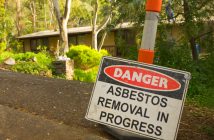New Zealand’s system for managing hazardous substances is changing to reflect the government’s health and safety reform, Environmental Protection Authority Senior Policy Advisor Tania van Maanen explains
The rules around managing risks to workers using hazardous substances will be transferred from the Hazardous Substances and New Organisms Act (HSNO) and regulations implemented by the Environmental Protection Authority (EPA) to the Health and Safety at Work Act (HSW) and regulations implemented by WorkSafe New Zealand.
“The changes are part of the government’s wider effort to improve workplace health and safety in response to the Pike River Mine tragedy,” van Maanen explains.
“We’re working closely with the Ministry for the Environment, the Ministry of Business Innovation and Employment and WorkSafe to implement changes that will help to improve health and safety at work in New Zealand”.
Combining the workplace health and safety aspects of the hazardous substance rules into the new Health and Safety at Work Act managed by one organisation, WorkSafe, was a recommendation made by the Independent Taskforce on Workplace Health and Safety.
This change will reduce the complexity of the rules and uncertainty for those businesses that use hazardous substances in their workplace, making it easier for businesses to comply and work towards fewer workplace injuries and illnesses.
The new hazardous substance regulations are the next in a suite of HSW regulations introduced earlier. “Some elements will remain largely the same but there will be changes to some requirements,” van Maanen adds.
The Health and Safety at Work regulations relating to hazardous substances are expected to be finalised in the first half of this year coming into effect in December 2017, and EPA notices will be finalised and come into effect at the same time as the regulations.
EPA changes
After the changes come into force, the EPA will continue to receive applications for hazardous substances, assess their risks and decide whether they should be approved for use in New Zealand.
The EPA will also continue to be responsible for setting the rules for classification, labelling, safety data sheets (SDS) and packaging, as well as for protecting the environment and public health.
One notable change of the reform is that most of the hazardous substance rules the EPA remains responsible for will be set in EPA notices rather than by regulation.
“EPA notices are approved by the EPA Board rather than having to go through Cabinet like regulations do.
“This will allow us to update the rules quickly in response to changes in technology or international best practice,” says van Maanen.
Despite the EPA Board being able to approve notices there is still a requirement that the EPA consult with the people and industry affected by the proposed changes and take their feedback into account.
They must also take into account international best practice and have regard to the costs and benefits any changes to the rules will make.
Most of these EPA notices will come into force in 2017 when most hazardous substance regulations under HSNO will be revoked.
However, two notices are already in operation – the Hazardous Substances (Importers and Manufacturers Information) Notice 2015 and the Hazardous Substances (Enforcement Officer Qualifications) Notice 2015.
The former contains a new requirement for businesses that make or import hazardous substances to provide basic contact information to the EPA.
The latter sets competency requirements for warranted hazardous substance enforcement officers based on knowledge and experience and no longer requires a set time to work under the guidance of a HSNO-warranted officer.
Close consultation
Several other notice proposals have been released for public consultation and the EPA is currently analysing the submissions on these.
These include proposals for the classification, labelling, safety data sheets, packaging and disposal of hazardous substances.
Currently open for consultation are proposals for a Hazardous Property Controls Notice, which covers two main areas.
One relates to setting requirements on environmentally hazardous substances, particularly around the safe use and management of agrichemicals.
The second relates to setting requirements on the access, use and storage of hazardous substances by the general public.
“All in all, we are confident that the development of EPA notices is a robust process that will allow for the consolidation of rules currently spread across many different regulations, approvals and transfer notices. This will simplify the rules and make it easier for people to understand their obligations.”
Enforcing the rules
In addition to the ability to develop EPA notices, the HSNO Amendment Act passed in September 2015 provides the EPA with a new enforcement role regarding approvals, labels, safety data sheets, packaging and the rules around product contents.
“The EPA’s enforcement role will make sure that the rules at the top of the supply chain are complied with. If these rules are followed, it means that labels and SDS will have the right safety information on them.
“This will mean everyone – workers in the workplace and people in the home, will have access to the right safety information so they know what they are dealing with and how to keep themselves safe.”
WorkSafe will continue to enforce requirements around the use of hazardous substances in the workplace (under the new HSW Act). They can also enforce workplace environmental and disposal controls under HSNO.
The police will have a new responsibility under HSNO to enforce restrictions on age and the period of sale of retail fireworks.
The scope of transport agencies’ enforcement responsibilities will be reduced due to the split of controls that will see vehicles, including tank wagons and ships fall under HSW.
There will be no significant change to the areas of responsibilities of enforcement agencies such as the Ministry of Health and local authorities.
Substances that are currently approved will still be approved post-commencement. However, the current HSNO workplace controls will no longer apply – instead people will need to comply with the new HSW Hazardous Substances Regulations. In many cases these regulations will contain elements previously contained under HSNO provisions.
The EPA website controls database will display the relevant HSNO and HSW controls, and the EPA remains committed to providing a comparable level of information on controls as at present.
Finally, a new set of group standards will be reissued for “Day 1” that will reflect the movement of workplace controls to HSW Hazardous Substance Regulations and the movement of other controls to EPA Notices.
Prior to these changes coming into effect the EPA and WorkSafe will be issuing guidance and information to help businesses understand their obligations under the new hazardous substances regime.
More information about this work can be found on the EPA website: http://www.epa.govt.nz/hazardous-substances/hsno-reform/Pages/default.aspx




